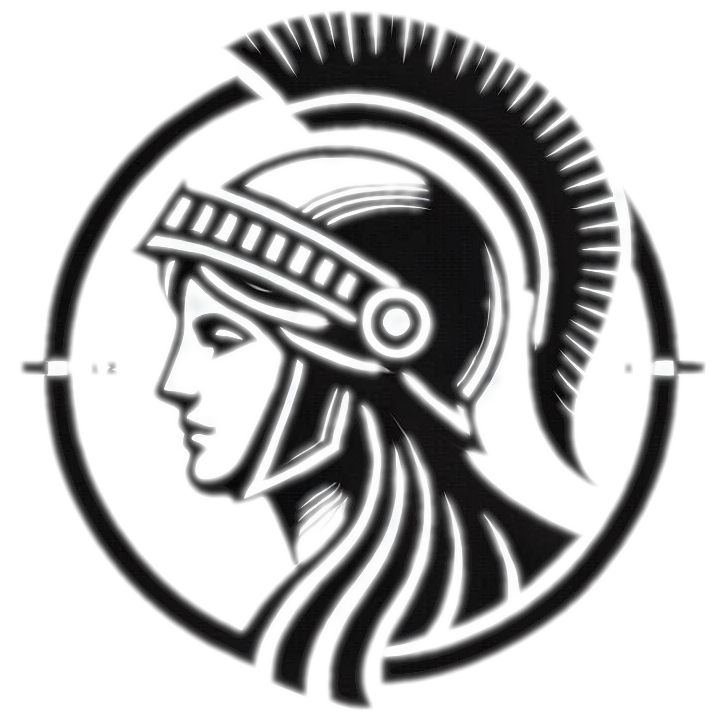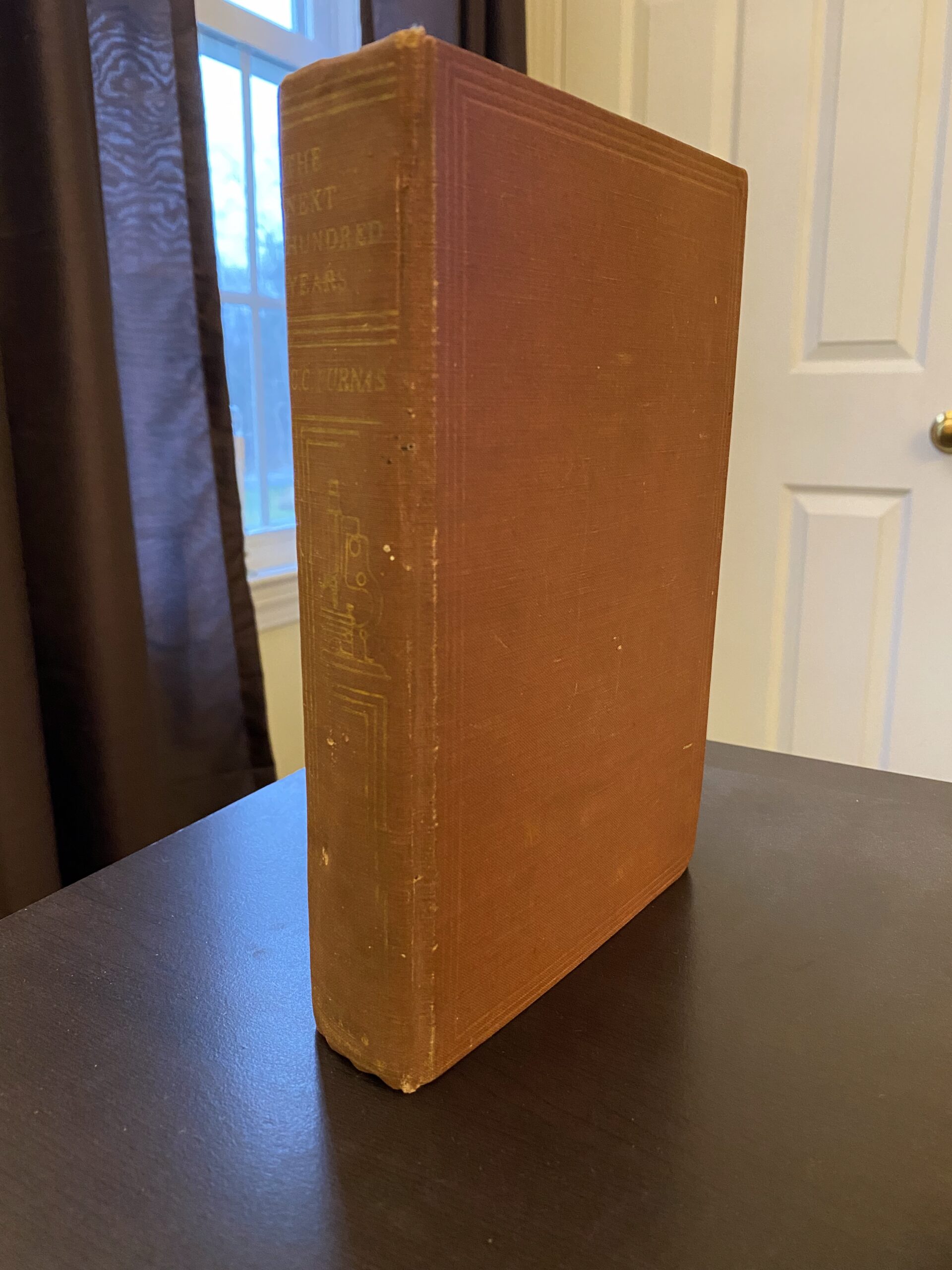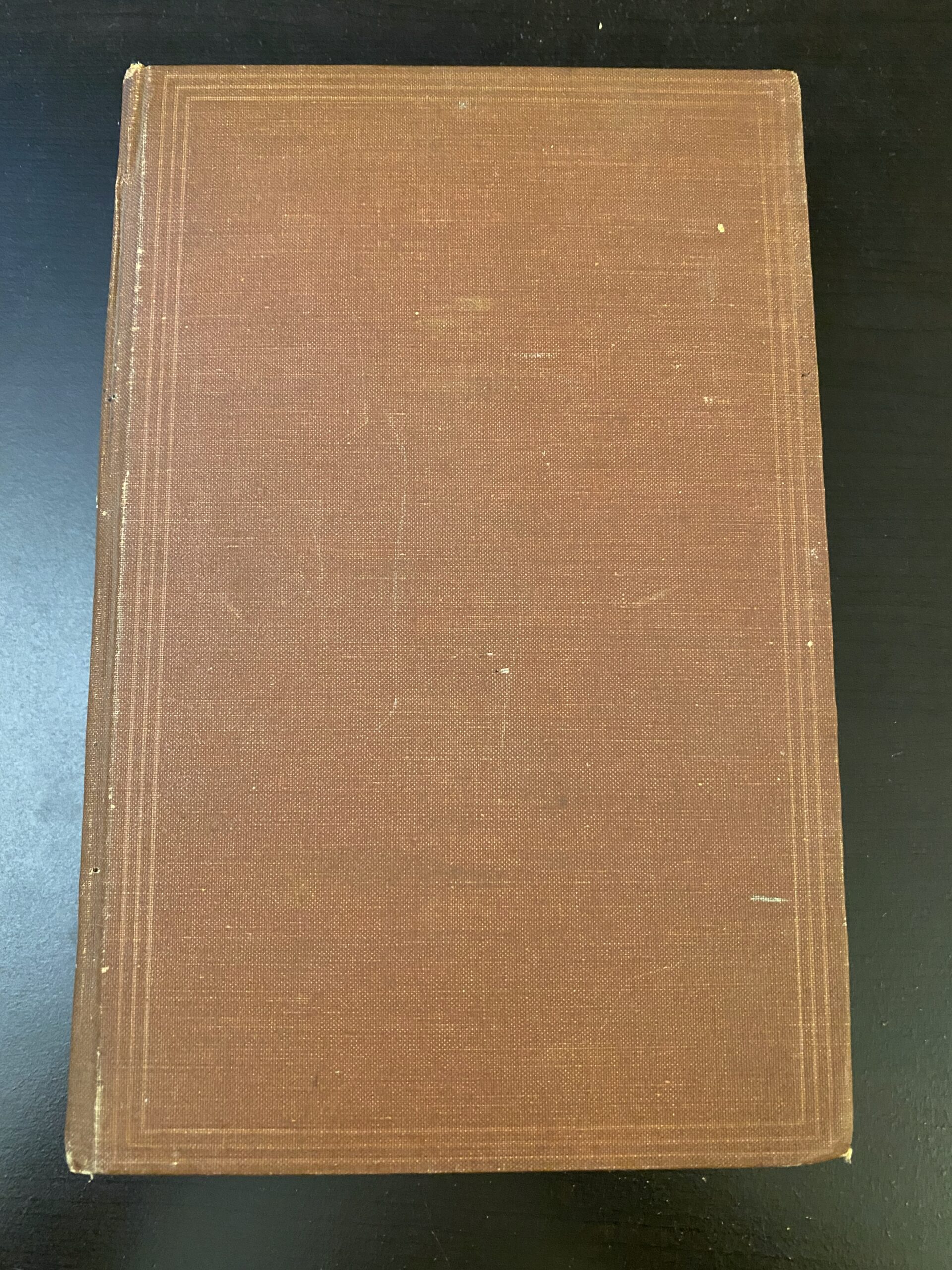- Title: The Next Hundred Years
- Author: C. C. Furnas
- Publisher: Reynal & Hitchcock , New York
- Estimated year of printing: 1936
Notes:
Copyright 1936, the Williams and Wilkins Company
Printed and bound by the Haddon Craftsmen, Inc., Camden, N.J.
Inscription: “Ruth E. Martin, January 1936”
This is an interesting book — published in 1936, it covers many different scientific and technological topics. For each, it describes the current state of the art and then conjectures about what will happen over the next hundred years (which would bring you to 2036 — so we haven’t quite hit that point yet). As such, it’s a very interesting time capsule for the time period, one of the books in my collection that I most enjoy to just sit and read.
There are many interesting topics covered. One of my favorites is the chapter on communication — radio existed and black and white television was the current state of the art. The focus for the future is discussing the possibility of color televisions, with an overall pessimistic tone that suggests the technology is still a ways off (in reality, the first color broadcast occurred in 1954). This chapter is a good example of the limitations of this book — it refers to color television as the “last frontier” of communication and then focuses on improvements such as undersea cables. It focuses very much on short-term, incremental improvements to what existed in 1936, and misses the more substantial innovations that would actually take place, such as the Internet. Similarly, the chapter on transportation spends a great deal of time discussion improvements to cars, trains, and the fledgling airplane industry, with no mention of space travel or exploration.
The author, C. C. Furnas, is interesting in his own right. Born in 1900, he competed in the 5,000 meter event at the 1920 Olympic Games, then went on to teach chemical engineering at Yale from 1931 – 1941. He then directed the airplane division of Curtiss-Wright during World War II, and then became the chancellor of the University of Buffalo, which became the State University of New York at Buffalo in 1962, with Furnas being the first president. He took a leave of absence from the university from 1955 to 1957, becoming the Assistant Secretary of Defense during the Eisenhower administration. He retired from the university in 1966, and then died in 1969.
Historical context:
When this book was printed in 1936, Franklin D. Roosevelt was President. It would be one more year before the Hindenburg disaster in 1937, and two more years before the character of Superman makes his first appearance in 1938.


